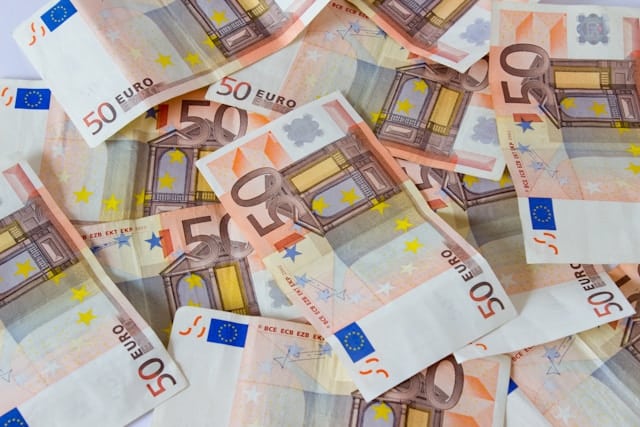Europe is a diverse continent with multiple currencies, despite many countries using the euro (EUR). Whether you’re traveling for leisure, moving abroad, or sending money internationally, understanding the different currencies in Europe is essential. This guide provides an in-depth look at European currencies, exchange rates, and key financial considerations for Canadians.
Key Insights for Canadians
- The euro (EUR) is the official currency of 20 of the 27 European Union (EU) countries.
- Some European nations, including the United Kingdom (British Pound), Switzerland (Swiss Franc), Romania (Romanian Leu), and Bulgaria (Bulgarian Lev), use their own national currencies.
- Exchange rates fluctuate, impacting the value of Canadian dollars (CAD) when converting to European currencies.
- Digital payments, contactless transactions, and cash usage vary across different European countries.
- It’s essential to check exchange rates, banking fees, and payment options before traveling or making international transactions.
Currencies Used in Europe
Euro (EUR): The Common European Currency
The euro is the official currency of the Eurozone, which includes 20 EU member states. This currency simplifies travel and trade between participating nations. Countries such as France, Germany, Spain, and Italy all use the euro, making it one of the most widely used currencies globally.
United Kingdom: British Pound (GBP)
Despite leaving the EU, the UK continues to use the British Pound (GBP), one of the strongest and oldest currencies. It is widely used in England, Scotland, Wales, and Northern Ireland.
Switzerland: Swiss Franc (CHF)
Switzerland, known for its financial stability, uses the Swiss Franc (CHF) instead of the euro. Swiss banks are globally recognized, and CHF remains a safe-haven currency for investors.
Romania: Romanian Leu (RON)
Romania, an EU member, still uses the Romanian Leu (RON) instead of the euro. Plans for euro adoption exist, but no definitive transition date has been set.
Bulgaria: Bulgarian Lev (BGN)
Bulgaria uses the Bulgarian Lev (BGN), pegged to the euro at a fixed rate. While the country intends to adopt the euro, the transition process is ongoing.
Exchange Rates and Currency Conversion for Canadians
Understanding Exchange Rates
Exchange rates fluctuate based on economic conditions, central bank policies, and global market trends. Canadians converting CAD to EUR, GBP, CHF, RON, or BGN should monitor currency values and choose the best time for exchange.
Where to Exchange Currency
- Banks & Credit Unions: Typically offer competitive exchange rates but may have transaction fees.
- Currency Exchange Kiosks: Convenient but may charge higher margins.
- ATMs in Europe: Often provide fair rates but may include foreign transaction fees.
- Online Money Transfer Services: Reliable for sending money abroad; compare rates before committing.
Best Payment Methods in Europe
Credit and debit cards are widely accepted across most European countries, with Visa and Mastercard being the most commonly used. However, American Express may not be as widely accepted. Before traveling, it’s important to inform your bank to avoid any potential issues with blocked transactions.
Cash remains a preferred payment method in smaller businesses, local markets, and rural areas. ATMs are readily available throughout Europe, but Canadians should be mindful of potential withdrawal fees when using foreign cards.
Digital and contactless payments are increasingly popular, especially in urban areas. Mobile wallets like Apple Pay and Google Pay offer convenient transactions in many European countries. Some nations, such as Sweden, are transitioning towards cashless societies, making digital payments an essential option for visitors.
Tips for Managing Money in Europe
- Check Fees: Understand foreign transaction fees on your cards.
- Use a Travel Card: Prepaid travel cards can help manage expenses and avoid unfavorable exchange rates.
- Monitor Exchange Rates: Use currency conversion apps to track the best exchange rates.
- Carry Multiple Payment Options: Have a mix of cash, cards, and digital payment methods for convenience.
Beyond Borders: Explore More About Currency
For in-depth insights into exchange rates, currency fluctuations, and financial tips, visit the Beyond Borders Currency blog.
FAQ: Currency in Europe for Canadians
1. Do all European countries use the euro?
No, while 20 EU nations use the euro, countries like the United Kingdom (British Pound), Switzerland (Swiss Franc), Romania (Romanian Leu), and Bulgaria (Bulgarian Lev) have their own currencies.
2. Where is the best place to exchange CAD for EUR?
Banks and online currency exchange services typically offer the best rates, while airport kiosks and hotel exchanges often have higher fees.
3. Can I use my Canadian credit card in Europe?
Yes, most major credit cards are accepted, but Visa and Mastercard are preferred. Notify your bank of travel plans to prevent transaction issues.
4. Is cash still widely used in Europe?
It depends on the country. Some places, like Germany and Italy, still rely on cash, while others, like Sweden, are predominantly cashless.
5. Should I exchange money before traveling to Europe?
It’s advisable to have some local currency on hand for emergencies, but withdrawing cash from ATMs in Europe often provides better exchange rates.
